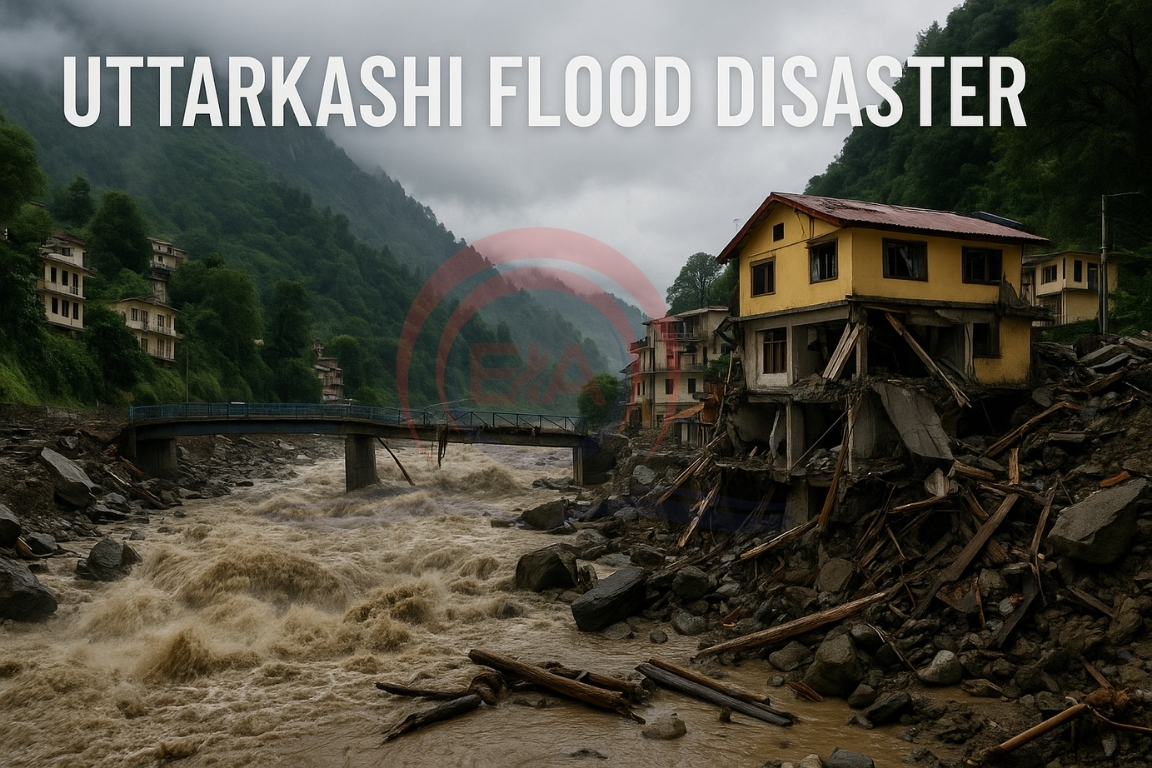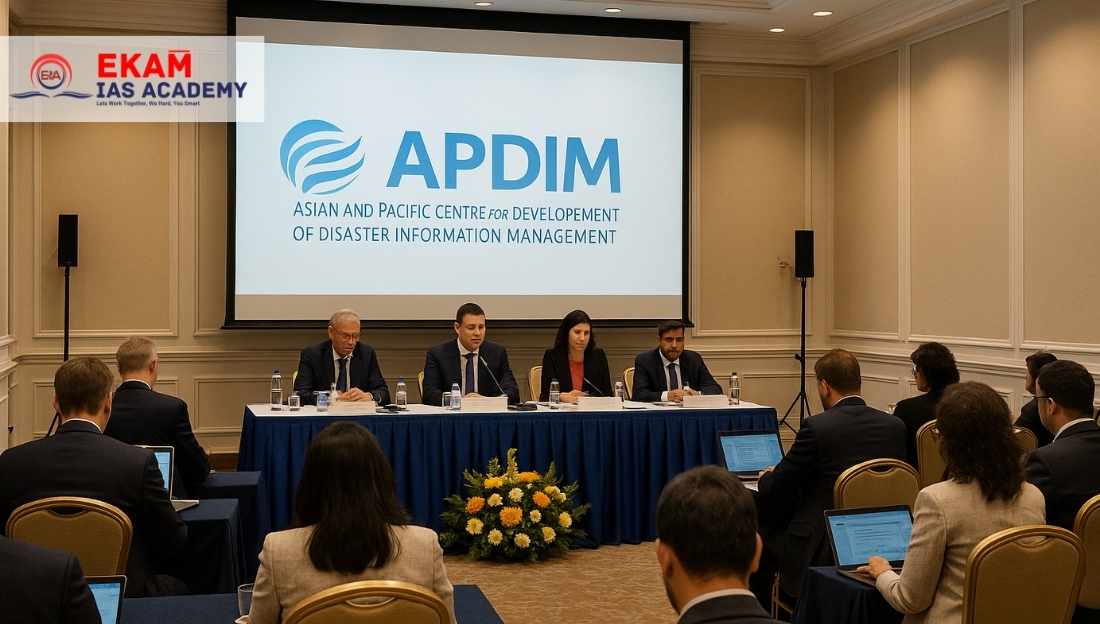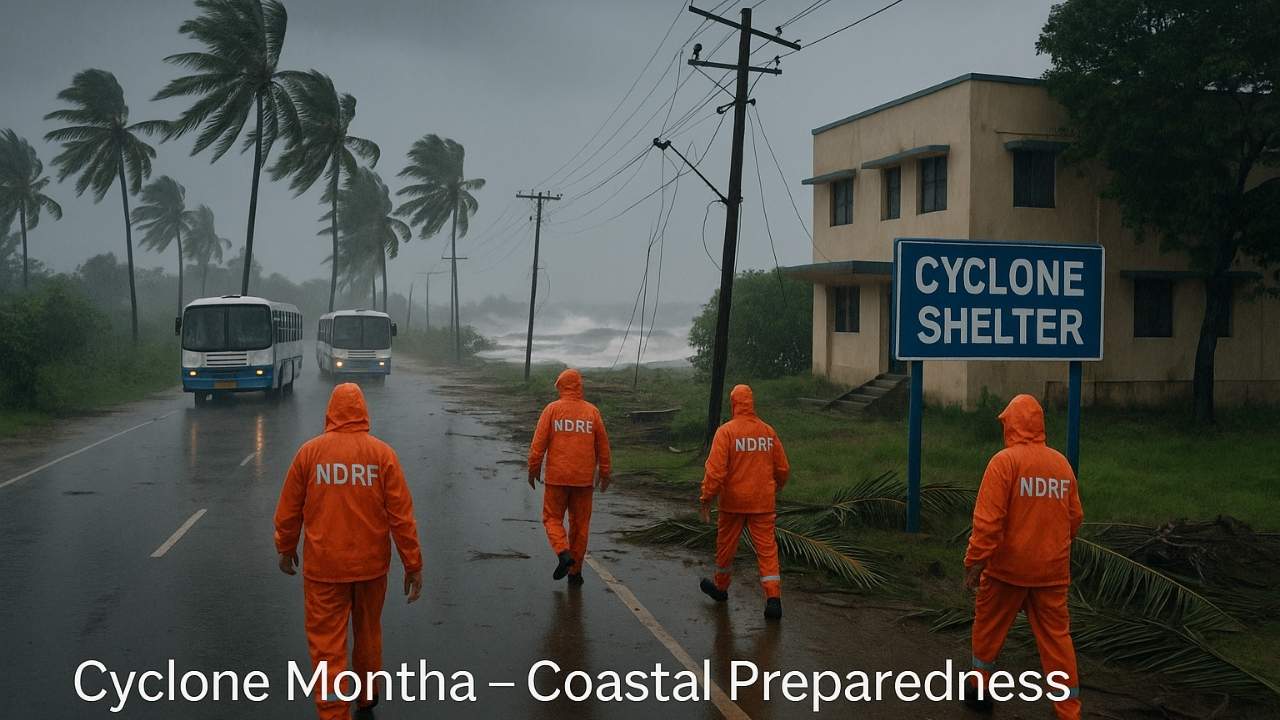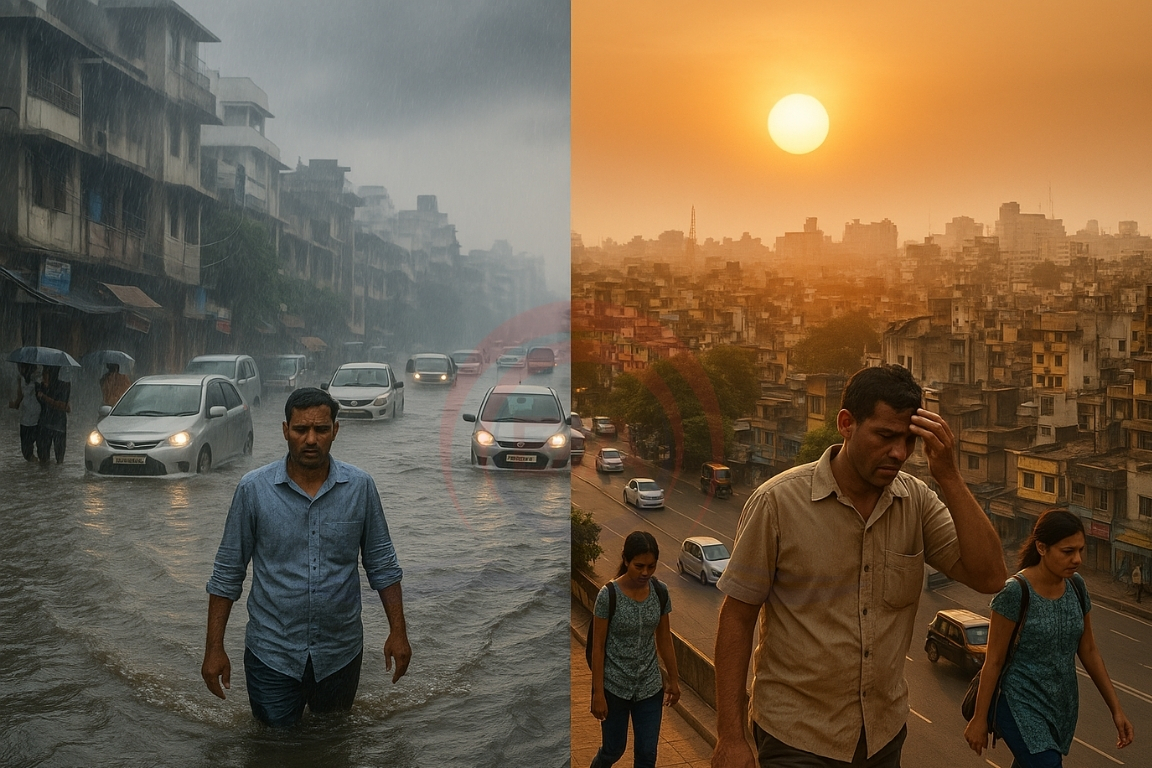A sudden flood in Uttarkashi, Uttarakhand, caused by heavy rainfall, led to the death of several people and massive destruction. This highlights the increasing vulnerability of Himalayan regions to extreme weather events and the urgent need for better monitoring.
What Happened in Uttarkashi
- A devastating flood hit Dharali town near the Kheer Ganga River in Uttarkashi district.
- Caused by intense rainfall between August 3–5, with up to 30 cm in one day.
- Water mixed with debris, soil, and silt destroyed homes and buildings.
- At least four deaths confirmed and over 60 people feared missing, including Army personnel.
- Videos showed powerful waves rushing through the area.
Cloudburst or Continuous Rainfall?
- State officials termed the event a ‘cloudburst’, though actual cloudbursts have a specific definition (10 cm rainfall in one hour over 10 sq. km).
- Due to the lack of high-altitude weather radars, IMD cannot confirm cloudbursts accurately in such regions.
- It is likely that steady rainfall over 48 hours loosened soil and triggered the flood.
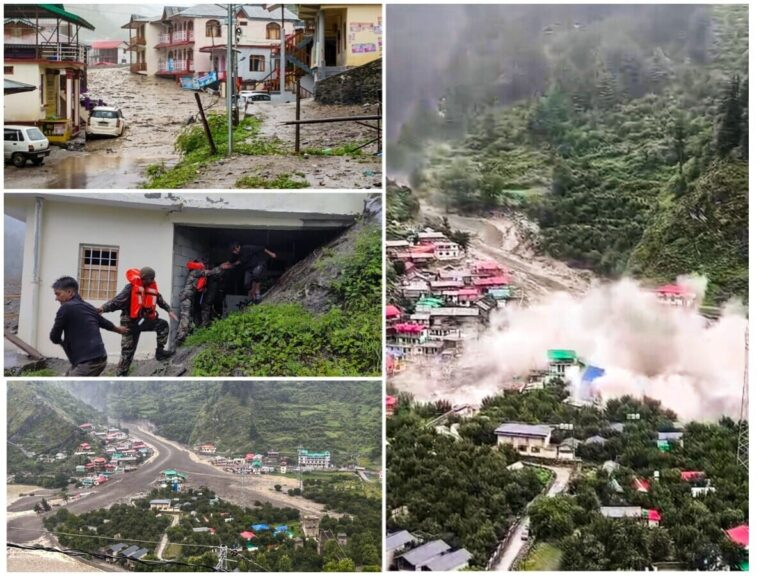
What is a Cloudburst?
- Cloudburst is a sudden and very heavy rainfall in a short time over a small area.
- It usually happens in mountainous regions like the Himalayas.
- It occurs when rain-bearing clouds release water all at once, like a bucket being emptied.
- Rainfall can be more than 100 mm in one hour — too much for the soil and drains to absorb.
- This causes flash floods, landslides, and destruction of property and life.
Why Does It Happen?
- When warm, moist air rises quickly and cools suddenly, clouds form and rain falls heavily.
- In hilly areas, clouds get trapped by mountains, increasing the chances of sudden downpours.
Effects of Cloudburst
- Flash floods
- Landslides
- Washed-away roads, bridges, and houses
- Loss of lives and livestock
Recurring Risk in the Himalayas
- These incidents are not rare; they are increasing due to climate change.
- Rising extreme rainfall events in hill regions raise the risk of sudden disasters.
- Unregulated construction, infrastructure projects, and hill cutting leave behind debris and silt that worsen floods and landslides.
Challenges in Disaster Response
- Calling it a ‘freak’ event allows authorities to avoid responsibility.
- Most responses include social media sympathy and token compensation.
- There’s a lack of proactive planning, especially in terms of early warning and risk mitigation.
What Should Be Done
- Post-relief, state governments must assess silt and debris accumulation at high-risk zones.
- Regular monitoring of sensitive locations in hilly areas is needed.
- Integrate climate adaptation into all new infrastructure projects in the Himalayas.
Conclusion:
Disasters like in Uttarkashi are not one-off events. Climate change and poor planning make the Himalayas more fragile, and governments must act to prevent future tragedies.


